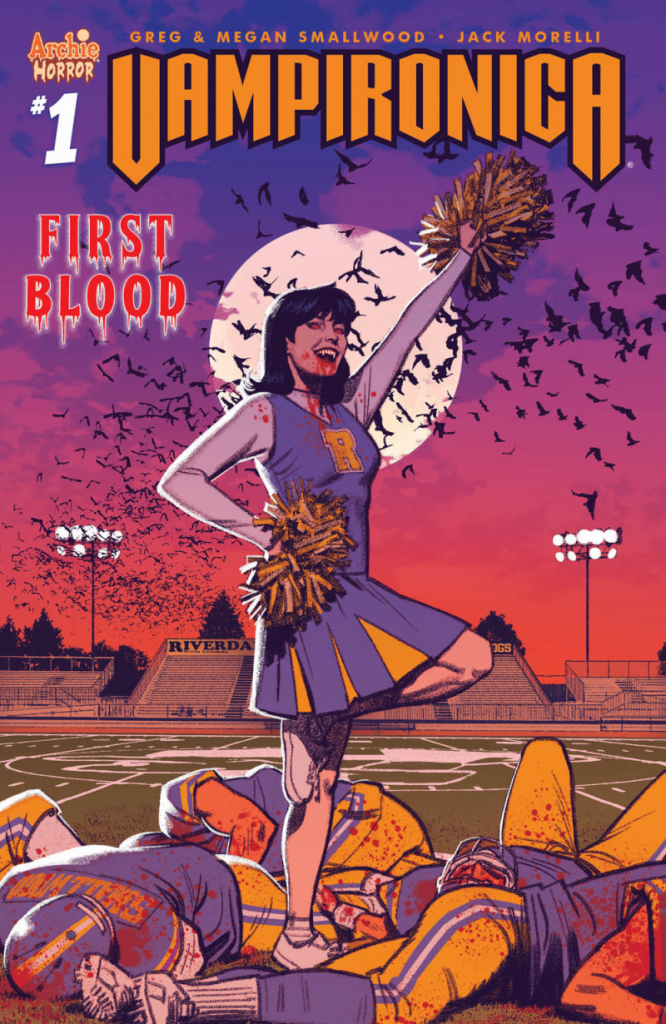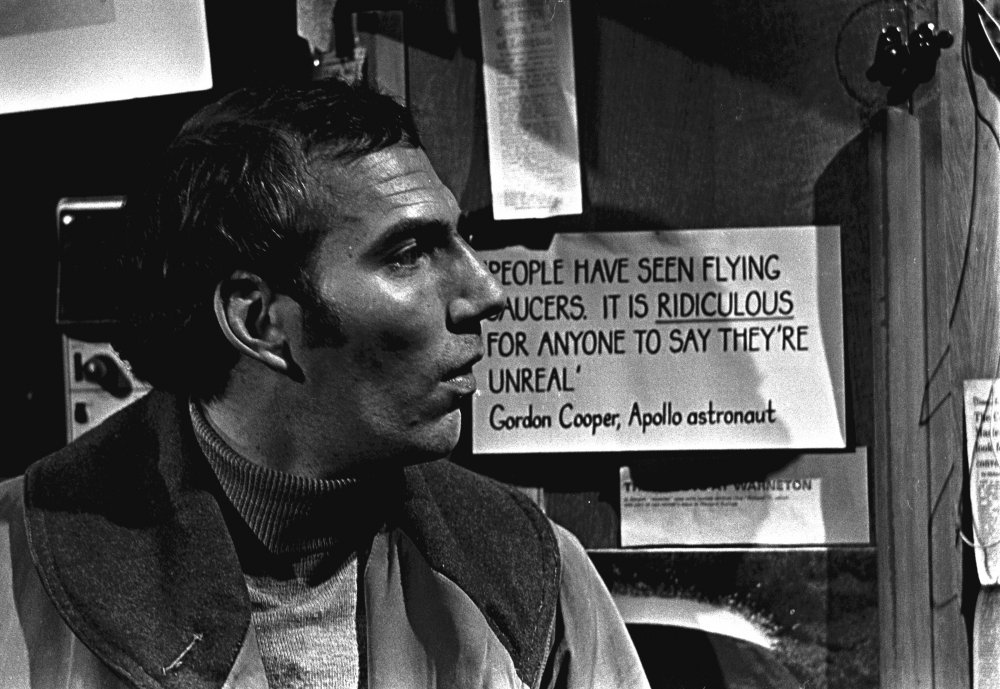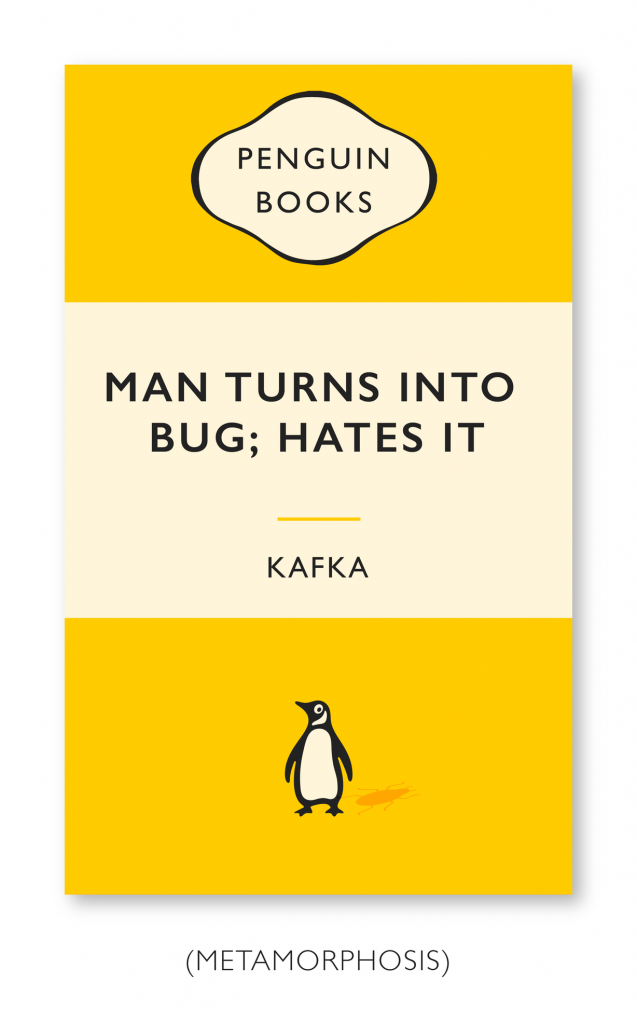(1) GLASGOW 2024 INITIATES CONSULTATIVE VOTE. The Glasgow 2024 Worldcon committee announced they will hold a “Consultative Vote on Hugo Rule Changes” – specifically, about the two new Hugo categories given first passage at the Chengdu Worldcon Business Meeting. Only WSFS members of the 2024 Worldcon will be eligible to vote. None of the other 12 rule changes passed at Chengdu will be part of the poll.
(Note that despite the phrasing below it was not a “resolution” but multiple amendments to the WSFS Constitution that were passed in Chengdu. A mere resolution would have no binding effect.)

…A resolution passed at the 2023 WSFS Business Meeting in Chengdu would create two new Hugo Award categories: the Best Independent Short Film Award and the Best Independent Feature Film Award. This resolution would need to be ratified by the 2024 WSFS Business Meeting in Glasgow to come into effect from 2025 onward.
At present, we plan to invite all WSFS members of Glasgow 2024 to express their views on the proposed change, in a straight yes-or-no online vote, in the weeks before the convention takes place in August 2024. The proposers will be invited to write a short statement in support of their proposal, and we will offer a similar facility to opponents….
The vote will be conducted immediately before Glasgow 2024—no earlier than the close of Hugo voting, no later than the start of the convention….
Doesn’t this usurp the Business Meeting’s role in changing the constitution?
No. The consultative vote will have no constitutional force. The decisions made by the Business Meeting will be final. Within certain limits, the 2024 Business Meeting can also amend the current proposal before it is ratified, subsequent to the consultative vote.
Why are you doing this?
Among the many potential reforms to WSFS Business Meeting procedures, putting proposals and other matters to a vote of WSFS members is an innovation that has often been mentioned. But it has never been tried. In 2016, the idea of an approval vote for Hugo finalists, as a third round in the nomination process, was passed at the Business Meeting but not ratified in 2017. We therefore propose to test the operation of a consultative vote, to explore if and how such a procedure could become part of the permanent rules….
Why are you not also calling a consultative vote on any other constitutional amendments that are up for ratification in 2024, or on any changes to the standing rules?
Several other constitutional amendments were indeed passed in Chengdu, most notably a proposal to set up an Asian regional convention under the remit of WSFS. Those amendments will also be subject to ratification by the Glasgow Business Meeting, but we do not think that they are suitable material for a consultative vote. Likewise, we don’t believe that amendments to the standing rules, either recent or envisaged, are suitable for this exercise. The Hugo proposal is more straightforward and perhaps of more general interest….
(2) PEAK TV. Variety has ranked “The 100 Greatest TV Shows of All Time”. The overall number one show is I Love Lucy.
Here are the sff programs on the list. The original Star Trek isn’t on it, only Star Trek: The Next Generation. No, I’m not including St Elsewhere, regardless of its sff ending. Should I have included The Simpsons (4) or BoJack Horseman (55) or South Park (59)?
14. The Twilight Zone
21. Game of Thrones
27. Twin Peaks
32. Lost
38. The X-Files
40. Buffy the Vampire Slayer
44. Star Trek: The Next Generation
49. Watchmen
58. The Good Place
79. The Muppet Show
83. Stranger Things
95. Black Mirror
(3) DID THEY MISS THE POINT? Charles Stross says “Tech Billionaires Need to Stop Trying to Make the Science Fiction They Grew Up on Real” in an article at Scientific American. (Possibly paywalled, or not. I had a 50-50 success getting to read it.)
Science fiction (SF) influences everything in this day and age, from the design of everyday artifacts to how we—including the current crop of 50-something Silicon Valley billionaires—work. And that’s a bad thing: it leaves us facing a future we were all warned about, courtesy of dystopian novels mistaken for instruction manuals.
Billionaires who grew up reading science-fiction classics published 30 to 50 years ago are affecting our life today in almost too many ways to list: Elon Musk wants to colonize Mars. Jeff Bezos prefers 1970s plans for giant orbital habitats. Peter Thiel is funding research into artificial intelligence, life extension and “seasteading.” Mark Zuckerberg has blown $10 billion trying to create the Metaverse from Neal Stephenson’s novel Snow Crash. And Marc Andreessen of the venture capital firm Andreessen Horowitz has published a “techno-optimist manifesto” promoting a bizarre accelerationist philosophy that calls for an unregulated, solely capitalist future of pure technological chaos….
(4) BRING ME THE HEAD OF E.T. “Screen-Used E.T. Animatronic Head Nets Big Money at Auction” – and SYFY Wire knows how much.
…An animatronic E.T. head used during the production of Steven Spielberg‘s coming-of-age sci-fi classic (the film is available to rent and/or own from Universal Pictures Home Entertainment) recently sold for a whopping $635,000 in a bidding war hosted by California-based auction house, Julien’s Auctions. The lot — which was initially estimated to bring in between $800,000 to $1 million — also included a DVD of the movie, just to sweeten the deal a little. Because if you’re going to drop a load of cash on an immortal piece of cinema history, you might as well get a slightly outmoded form of home entertainment for your troubles….

(5) KERFUFFLE COVERAGE. The year could not end without another writerly uproar. Anne Marble has a full roundup in “Can You Copyright the Sun?. The Latest Author Attack of 2023” at Medium. Account required to read the complete story.
So what happened? An author named Lauren M. Davis accused another author of copyright infringement.
Wow. Oh, no! That sounds serious.
But wait. The targeted author — Marvellous Michael Anson — is innocent.
All Marvellous Michael Anson did was promote her upcoming book — an adult fantasy romance called Firstborn of the Sun. Like many acclaimed fantasies in recent years, this one is influenced by West African culture and magic. In this story, everyone is able to draw power from the sun. Except the heroine, Lọ́rẹ. She instead yields a shadow magic…
Note that Anne Marble is a bit concerned that people may be giving the accuser too much attention, because the complaint is so dubious some suspect she may be doing this to get sales. Or simply trolling everyone.
(6) FIGURES REVEALED. “The December Comfort Watches, Day Nineteen: Hidden Figures” – a John Scalzi review at Whatever.
…History, as taught in school, is about choices made. When I was a kid, this story was not one of the choices made.
This can be, I will note, one of the great advantages of film. Hollywood is always looking for stories, and while it is not afraid of recycling the same ones over and over and over, it still from time to time unearths one that is new, or at least new to a general audience. Some of those stories come from history, recent or otherwise. And while one must always take the history that Hollywood provides with a massive grain of salt (including this one; the general arc of Hidden Figures’ story is true, but specific incidences are pumped up and rearranged for dramatic purposes, and certain characters outside of the three main roles are made up out of whole cloth), it nevertheless has the effect of saying: This is a thing that happened, you didn’t know, and we, in our fashion, are telling you about it….
(7) DARK MATTER MAGAZINE TO BE RETIRED. “Issue 018 Will Be The Final Issue Of Dark Matter.” An announcement from Rob Carroll, Founder & Publisher.
When I started Dark Matter three years ago, I wondered if anyone would even care. There are so many excellent short fiction publications out there. Why should people pay attention to this one?
I don’t have an answer to how or why readers and writers and artists jumped on board, but I’m forever grateful they did. Thanks to them, Dark Matter will end its third year of publication in December of 2023, having published 21 issues (18 regular issues plus 3 Halloween special issues), more than 180 stories, more than 40 art features, and a number of interviews with industry greats. These past three years have been a dream come true for me. The joy of creating and editing my own science fiction magazine was an honor and a privilege, and one that I’ll never forget. Helping in a small way to create something that people truly enjoy is the best feeling in the world.
So why close now? Well, there are two simple reasons. One is bandwidth. Starting in 2024, Dark Matter will focus exclusively on our growing trade imprints and audio division. The Dark Matter staff is the most talented and dedicated group of people I’ve ever worked with, but we’re still small in number. In order to continue producing the quality readers have come to expect, I needed to streamline our business model and refresh our focus. The last thing I want is to overextend staff or fail to meet promises made to the readers and contributors that trust us with their time, money, and hard work.
The second reason: it’s time to give others a chance….
The publisher is transitioning to producing Dark Matter Presents line of anthologies, published by Dark Matter INK.
(8) GREAT LIVES FEATURES BALLARD. [Item by SF Concatenation’s Jonathan Cowie.] BBC Radio 4’s Great Lives this week looked at the SF author J. G. Ballard. Among the programme’s contributors was his daughter, so the show had some real insights. For example, J. G. Ballard never objected to being called a science fiction writer, but equally did not like being pigeon-holed. Also covered were his predictions including climate change (Drowned World, 1962) and socially divisive housing (High Rise, 1975) and things like YouTube/streaming (accessible video on demand) which he predicted back in the 1970s. The 25 minute programme also covered his life beyond his writing.
Philosopher John Gray chooses as his great life the iconic British writer of dystopian and speculative fiction, J.G. Ballard, in conversation with the author’s daughter Bea Ballard.
You can download it here.
(9) BOB JOHNSON (1944-2023). [Item by Steven French.] I remember buying that Steeleye Span album Below the Salt! “Bob Johnson obituary” in the Guardian.
…Exhausted by the touring, Johnson left the band to work with Knight on a 1977 concept album, The King of Elfland’s Daughter, based on the 1924 fantasy novel by Lord Dunsany. Johnson and Knight were joined by a star cast that included Christopher Lee and the blues hero Alexis Korner, but it was not a commercial success. “It was a lovely project and completely Bob’s idea,” said Knight, “but the record company had no intention of promoting it.”
Johnson re-joined Steeleye for the 1980 album Sails of Silver, but by now folk-rock was out of fashion, swept away by punk and disco. The band’s schedule was far less hectic, allowing him to study for a degree in clinical psychology at Warwick University, followed by an MA at the University of Hertfordshire and occasional work as an occupational therapist in Harley Street. Ill health forced him to leave Steeleye once again in 2002, but he returned to contribute two songs and guest vocals for the band’s 2013 concept double-album, Wintersmith, which was based on stories by the author Terry Pratchett, a Steeleye fan….
(10) TODAY’S BIRTHDAY.
[Written by Cat Eldridge.]
Born December 20, 1960 — Nalo Hopkinson, 63. Our Birthday guest tonight is the Jamaican-Canadian writer who I first encountered when I read her Brown Girl in the Ring with its magic realism Afro-Caribbean folklore rooted culture. She won the 1999 Astounding Award for Best New Writer, was a GoH at the 2017 Worldcon in Helsinki, and named a SFWA Grand Master in 2021.
Now I’m going to gush like a true fan here as everything she has done since her impressive debut is most stellar.
Midnight Robber, that draws off the Trinidadian culture and puts it in a SF setting, was nominated for a Hugo Award at The Millennium Philcon and shortlisted for the Nebula Award and the Canadian Sunburst Award. It is an extraordinary coming of age story.
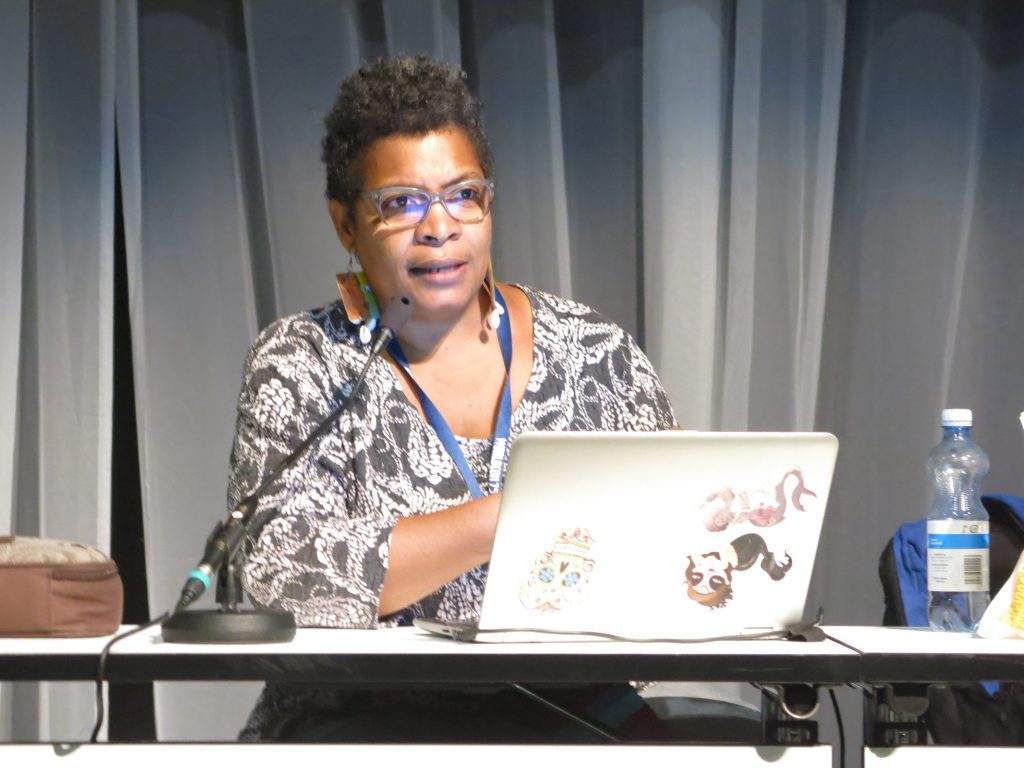
So what’s next? Her short fiction must not be overlooked and Skin Folk which garnered a much deserved World Fantasy Award for Best Story Collection is well worth your reading time.“The Gloss Bottle Trick” herein got nominated for an Otherwise Award, and “Something to Hitch Meat To” got a World Fantasy Award nomination.
And that is one eerie cover, well as done by Mark Harrison.
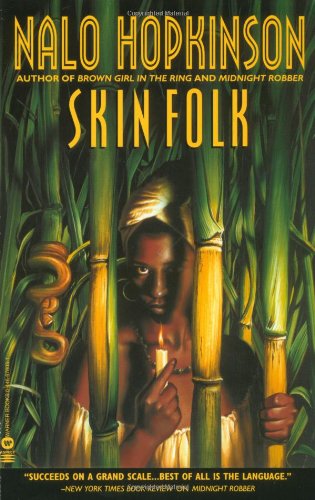
Back to novels…
The Salt Roads is not light reading. Depending on your trigger points, it definitely could be depressing. Or worse. I can’t say as you’ll need to read it to find out. The best review of it by far was by Gwyneth Jones in the 91st issue of Foundation.
Everyone but Hugo nominators loved her tale of an orphaned child with a mysterious past and the fantastic troubles it causes in the life of a Caribbean woman as told as in the New Moon’s Arms. I’m not kidding. It won both Sunburst and the Prix, and had nominations for a Campbell Memorial, Mythopoetic Award and a Nebula.
She says the sources for her novels often comes from songs or poems with Christina Rossetti’s poem “Goblin Market” is that for her Norton Award winning Sister Mine which is the complicated tale of two sisters. Fascinating read.
I’ll finish off with her writing for The Sandman Universe: House of Whispers which I think is some of the best work done for that series. It is available, as is all of her work, from the usual suspects.
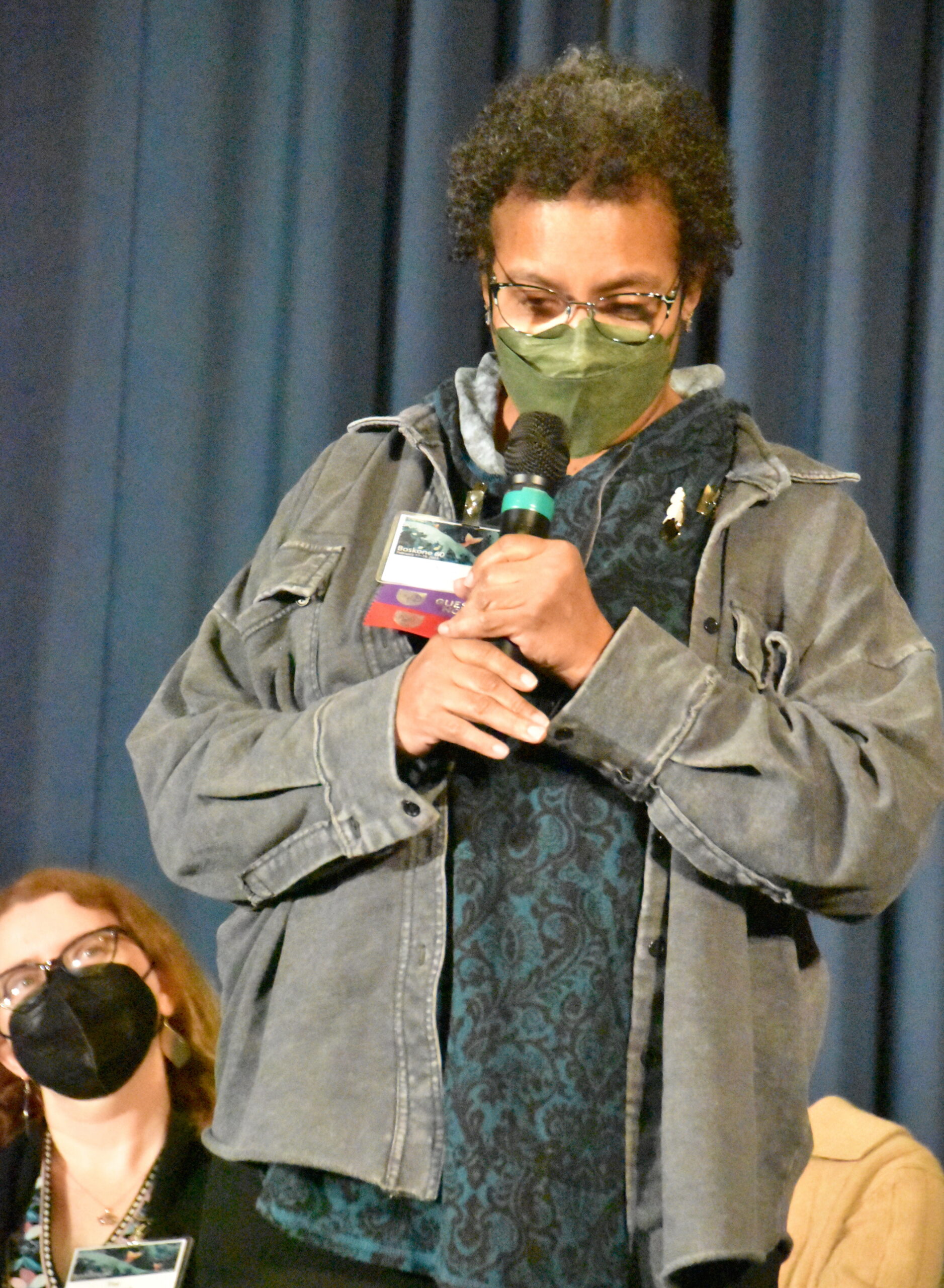
(11) TIME TO OPEN YOUR GIFTS. The Robert Bloch Official Website tells everyone they’re just in time to receive two “presents” for the holidays.
- Read “The Night Before Christmas” (available until 12/30; apologies for the formatting)
- See artist JB Lee’s rendition of a Lovecraft Mythos Shoggoth, inspired by “Notebook Found in a Deserted House.”
(12) FICTION STORIES FROM THE JOURNAL NATURE. [Item by SF Concatenation’s Jonathan Cowie.] Nature “Futures” now seems to be open access again. They seem to vacillate between being open access and being behind a pay wall (only a couple of weeks ago when I last checked they were behind a paywall as I had to log in to see them (I am a Nature subscriber)).
SF² Concatenation has an arrangement with Nature to re-post what it considers to be the four best of these stories a year subject to author approval. These ‘best of’ ‘Futures’ are all open access. http://www.concatenation.org/futuresindex.html.
(13) HARD-R TREK. One of the director’s collaborators claims to know “Why Quentin Tarantino Stark Trek Movie Was Never Made” and Variety has the story.
Quentin Tarantino fans were sent into a frenzy in late 2017 after it was announced that Paramount and “Star Trek” producer J.J. Abrams had accepted Tarantino’s pitch for a new “Star Trek” movie and were working with “The Revenant” screenwriter Mark L. Smith to iron out the script. The project ultimately never got made, but Smith recently told Collider while promoting his latest project, the George Clooney-directed drama “The Boys in the Boat,” that it would’ve been “the greatest ‘Star Trek’ film.”
“Quentin and I went back and forth, he was gonna do some stuff on it, and then he started worrying about the number, his kind of unofficial number of films,” Smith said. “I remember we were talking, and he goes, ‘If I can just wrap my head around the idea that ‘Star Trek’ could be my last movie, the last thing I ever do. Is this how I want to end it?’ And I think that was the bump he could never get across, so the script is still sitting there on his desk.”
…Tarantino has long said he will retire from feature filmmaking after making his 10th movie. He has nine movies under his belt (he views the two “Kill Bill” movies as one movie), which means there’s only one Tarantino-directed film left. That will be “The Movie Critic,” not a “Star Trek” movie.
“I know he said a lot of nice things about it. I would love for it to happen,” Smith said. “It’s just one of those things that I can’t ever see happening. But it would be the greatest ‘Star Trek’ film, not for my writing, but just for what Tarantino was gonna do with it. It was just a balls-out kind of thing.”
“But I think his vision was just to go hard. It was a hard R. It was going to be some ‘Pulp Fiction’ violence,” Smith continued. “Not a lot of the language, we saved a couple things for just special characters to kind of drop that into the ‘Star Trek’ world, but it was just really the edginess and the kind of that Tarantino flair, man, that he was bringing to it. It would have been cool.”…
(14) MORE CAT VIDEOS, PLEASE. “Orange tabby cat named Taters steals the show in first video sent by laser from deep space” reports AP News.
An orange tabby cat named Taters stars in the first video transmitted by laser from deep space, stealing the show as he chases a red laser light.
The 15-second video was beamed to Earth from NASA’s Psyche spacecraft, 19 million miles (30 million kilometers) away. It took less than two minutes for the ultra high-definition video to reach Caltech’s Palomar Observatory, sent at the test system’s maximum rate of 267 megabits per second.
The video was loaded into Psyche’s laser communication experiment before the spacecraft blasted off to a rare metal asteroid in October. The mission team at NASA’s Jet Propulsion Laboratory in Pasadena, California, decided to feature an employee’s 3-year-old playful kitty.
The video was streamed to Earth on Dec. 11 and released by NASA this week. Despite the vast distance, the test relayed the video faster than most broadband internet connections here on Earth, said the project’s Ryan Rogalin.
NASA wants to improve communications from deep space, especially as astronauts gear up to return to the moon with an eye toward Mars. The laser demo is meant to transmit data at rates up to 100 times greater than the radio systems currently used by spacecraft far from Earth….
(15) SCANSION. “Black holes, love and poetry — an artistic exploration of intimacy and adventure” at Nature.
The Warped Side of Our Universe: An Odyssey through Black Holes, Wormholes, Time Travel, and Gravitational Waves Kip Thorne & Lia Halloran Liveright (2023)
Physicist Kip Thorne and visual artist Lia Halloran began to collaborate on a magazine article about the strange, warped space-time in and around a black hole more than a decade ago. It was never published — but it inspired a much more ambitious project.
The pair have just released an illustrated book portraying space-time storms generated by colliding black holes and neutron stars, as well as wormholes and the possibility of time machines — with explanations and illustrations all guided by cutting-edge computer simulations. It’s an intimate account, too. Halloran’s paintings depict her wife, Felicia, with her body stretching, spinning and contorting as she nears the gravitational maw of a black hole. Thorne expresses his words in verse….
(16) HOLIDAY TUNE. Return now to those thrilling days of 1979: “John Denver & The Muppets – The Twelve Days of Christmas”.
John Denver and the Muppets: A Christmas Together is a 1979 Christmas television special starring Jim Henson’s Muppets and singer-songwriter John Denver. The special first aired December 5, 1979, on ABC.
(17) VIDEO OF THE DAY. Daniel Dern doesn’t want you miss the “Pink Panther & James Bond EPIC Theme Song Mashup” (first posted in 2022.)
This time I took the famous Pink Panther theme song by Henri Mancini and the also famous James Bond Theme by Monty Norman. In my opinion the two themes fit perfectly together but judge yourself. For this Epic song mashup I used my Korg Kronos 61 and Korg Kronos 88. All the sounds you hear are specially designed for this classic theme song mashup.
[Thanks to Andrew Porter, John King Tarpinian, Chris Barkley, Daniel Dern, Rich Lynch, Steven French, Cat Eldridge, SF Concatenation’s Jonathan Cowie, and Mike Kennedy for some of these stories. Title credit belongs to File 770 contributing editor of the day Andrew (not Werdna).]


